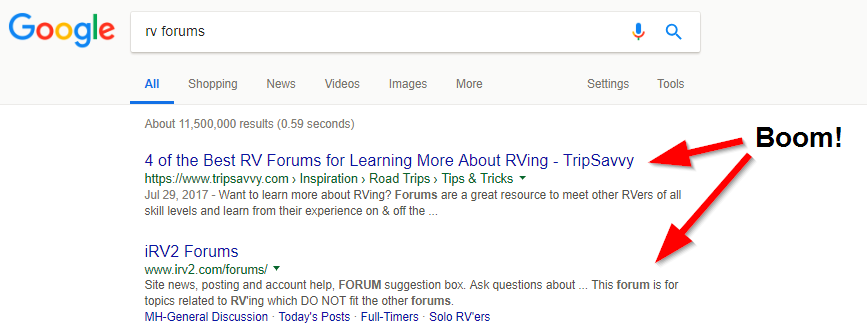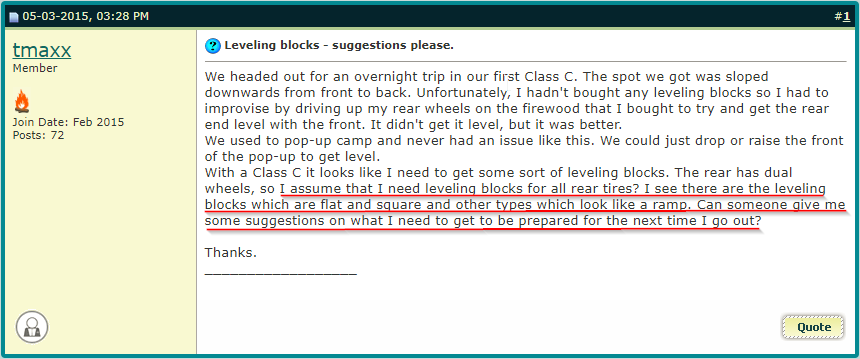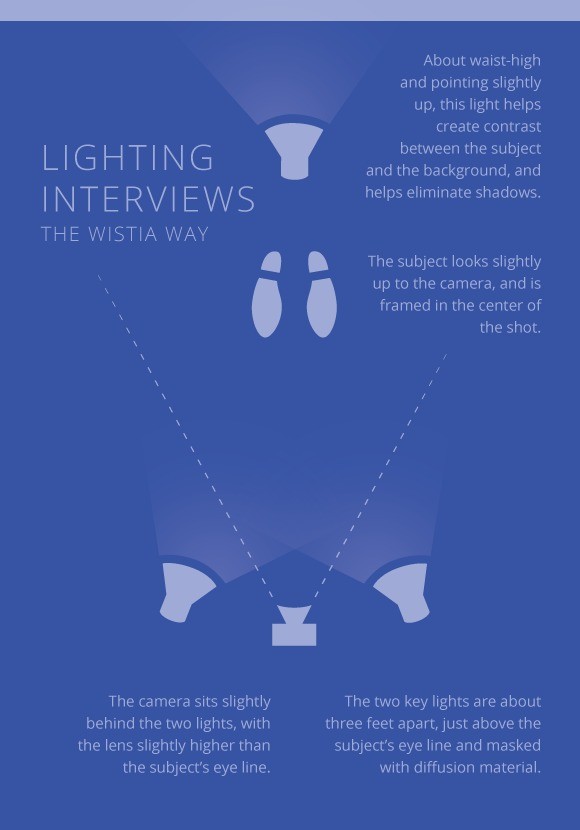Video is HOT!
But don’t take my word for it:
-
In one study, when both video and text are available on the same page, 72% of respondents said they would rather use video to learn about a product or service.[*]
-
Videos are appearing in more and more Google search results (most of them are from YouTube — so host your videos there).
-
Including a video on a landing page can increase conversion rates by 80%![*]
And that’s just scratching the surface.
Are you ready to leverage video marketing to sell more products? In this article, you’ll learn why ecommerce video marketing is important and how to use it to increase your sales. Let’s dive in!
%(tableofcontents)
Why Use Video Marketing?
I already shared how video marketing can increase your conversion rates and help you show up in search results. But those aren’t the only benefits!
KAP7, an online water polo equipment retailer contributes professional video product reviews as a factor leading to 30% year-over-year revenue growth.[*]
At the heart of their video strategy is a sophisticated set of buyer personas, which includes parents, coaches or athletes of any age.
Alex Young (KAP7 General Manager) said, “In order to market to each customer type, we use product reviews from both purchasers as well as professional video product reviews,” he said. “We also provide drill and trips, and collaborate with national team coaches and athletes to educate about the sport.”
To get product reviews from your customers, you can follow this simple three-step strategy.
For professional video product reviews, take a look at this example starring the two KAP7 co-founders, who are also accomplished water polo athletes themselves:
(They’re not the only ones seeing huge success in video — I’ll share some more great examples in the following sections.)
The reason video works so well is because:
-
Humans are visual creatures.
-
We process video faster than text.
-
Video taps into multiple senses (sight and hearing), which helps reinforce the message in our minds.
Plus, it’s much easier to tell a heart-warming story in a short time with video. You can make people feel with video, and imagine your product in their hands. That’s much harder to do with text.
In short: product video marketing works pretty darn well (when done right). So how do you do it “right”? First, you need to know what you’re actually creating.
5 Types Of Product Videos
When it comes to ecommerce product videos, there are countless types of videos you can create. To help you choose, I’ve covered five of my favorites:
-
The “How-to” video
-
The “Product-in-use” video
-
The “Close-up” video
-
The “Installation” video
-
The “Story” video
In the words of Mario, here we go!
1. The “How-to” video
The classic “how-to” video shows, well, how to use your products!
Who it’s for: Anyone with a somewhat complex product where the features are the main benefit OR with a product that has many uses. Use this video type as a how-to while also showing off how cool your product is.
A great example of this is the Breville Precision Brewer. They created a series of how-to videos to show off the classy, unique features of their coffee brewer while also showing how easy it is to use.
An alternative to the “how-to” video is showing how to do something specific with your product, instead of showing how to use the product itself.
For example, KAP7 has loads of videos sharing how to become a better water polo player. They don’t directly promote their products, but they show them in use in the videos. (Bonus points for having pro water polo players in their videos.)
Another great thing about this style of how-to video is that it doubles as content for your blog or YouTube channel (since it’s not just a straight product pitch, but has additional value for your viewers).
2. The “Product in use” video
This video type is all about your product. It shows off real people (preferably people who resemble your target audience) using your product in everyday life.
Who it’s for: Anyone with a product that’s better to see in use than to read about. Really, almost any product that has a “use” is a good fit here.
My favorite example of a “product in use” video is Solo Stove. They make contained campfire pits optimized for easy cooking and portability — perfect for camping!
I especially love how they show off their accessories in the video without calling too much attention to them. So cool!
They use their videos on their product pages as well. Take a look:

(Side note: I LOVE their product pages. I can’t think of a company who uses more product page best practices and blends them together seamlessly.)
3. The “Close-up” video
This video style is just what it sounds like — a close-up look of your product!
Who it’s for: Anyone with a detailed product that would benefit from a very high-quality close-up to show off those small details. Things like leather work, diamonds, or anything with “excellent craftsmanship”.
One example is this simple, but elegant HD close-up of a diamond ring from Tiffany:
I think this is a great time to mention that you don’t need to be the one to actually record your video. There are video production specialists out there you can hire to help you out — if you have the budget! (They run from $50 to $5,000 and much higher depending on what you need.)
Click the button below to get a list of video productions specialists you can hire.
Get The List Of Video Production Specialists
Here’s another example, also shot by Epic Minds (same as the video above):
In combination with these close-up videos, you can explain the materials and craftsmanship of the different parts you’re zooming in on to create an even better video!
4. The “Installation” video
The “installation” video shows your viewers how to install or set up your product.
Who it’s for: Anyone with a semi complex product installation. Or even a simple installation that’s just easier to show via video than text and images.
One example of this is a fan-made video for WiFiRanger, a device that boosts your Wi-Fi signal up to two miles.
While this wasn’t made by WiFiRanger themselves, it just goes to show that you don’t need to create the videos — sometimes you can set up great affiliate marketing programs that do the video marketing for you!
Here’s another example from Nest, a smoke and carbon monoxide alarm:
The key in these kinds of videos is to make installation of the product look as easy and pain-free as possible. So practice before you publish!
5. The “Story” video
Finally, we have the “story” video. This video shows the story behind the product — why is it made? How is it made? What does the product do for the greater good?
Who it’s for: Anyone with a great story behind their brand or product.
The first example that came to my mind here was my friend Arthur Scharf, a leather craftsman and the founder of Innovative Journaling, a company dedicated to creating some of the best handmade leather journals and bags I’ve ever seen.[*]
His video was completely self-shot and edited in-house, and it reminds me of a How It's Made episode:
That example was the story of their product. But what about the story of the brand or person behind the product?
To show you this angle, here’s a video from Pi Zero, a company that sells extremely affordable (starting at $5) computer processors to help anyone learn how to code.
He shares a very relatable story of why he started the company and their mission.
Side note: One thing I would improve about this video is the guy’s enthusiasm. While it’s awesome to hear his story and be able to relate, he says “uh” and “uhm” a lot, so a little more rehearsal and practice could have gone a long way.
Here’s one final example of a different angle of the story video… the story that inspired your product.
To show that, we have Shopify store Gaiam showcasing the Balance Ball Chair through story.
And that’s all for video types.
To get a list of more How-to, Product-in-use, Close-up, Installation, and Story videos, download our swipe file below.
Get My Ecommerce Video Marketing Swipe File
Next up, here are some video marketing tips to help you create your own videos.
7 Essential Video Marketing Tips
When it comes to ecommerce video marketing, it’s easy to get overwhelmed and not know where to start.
Don’t worry — I’ve put together seven key marketing tips to help you get started!
1. Research your audience beforehand with forums and surveys.
The key to any great marketing strategy is to know your audience.
Video marketing is no different.
To learn more about your target market, start with surveys and forums. They’re the easiest and fastest way to understand a potential buyer.
Just go to Google and type in “[keyword] forums”. For example, I might search “RV forums” if I’m selling RV-related products.

Once you find the forums, start browsing them. Look for posts regarding people’s pain points, dreams, and desires surrounding your product.
Let’s say I sell leveling blocks for RVs. I searched the forum for posts related to “leveling blocks” and found this post:

Based on this post, and the responses to it, I’ve realized that people want more education around how to properly level an RV. He asked about the difference between flat blocks and ramp blocks, and if he needs leveling blocks for all the rear tires or not.
I'd create a video that teaches people everything they need to know about the different kinds of leveling blocks and how to properly level an RV, while also indirectly promoting my company’s leveling blocks. This would be a how-to video.
2. Tell a story using this simple narrative.
Most great videos have some sort of story behind them, as you’ve seen above. But telling a story with video isn’t the easiest thing in the world!
To get around this, follow this story narrative:
-
Open with a hook — something that captures the viewer’s attention, such as a promise of what they’ll get from watching or something funny.
-
Have a hero and a villain. It could be your own personal story, or something made up that you know your audience struggles with. Bonus points if you make the viewer into the hero, and their problem into the villain (like debt, literal pain, stress, etc.).
-
Show how your product helps the hero beat the villain in some way. It helps you save automatically, eases pain so you can finally spend time with your kids without hurting, etc.
-
Display life after the hero wins. A life of being debt- or pain-free, or whatever your identified “villain” is.
Here’s an example of the story narrative from Shopify store Mucinex. Mucus is the villain, and Mucinex is the hero that saves you:
Of course, not all videos need to tell a story. “Close-up” videos can just be to show craftsmanship, and “product in use” videos can just be practical. A story just adds a cherry on the top.
If you feel like you can’t come up with a good story, don’t be afraid to hire outside help if you can afford it.
3. Keep it short (30-60 seconds).
People's attention spans are dwindling. We’ve been compared to goldfish for crying out loud!
To accommodate this, keep your video in the 30-60 second range. If you need to make it longer, be sure to cut as much fat as possible, and keep it very interesting.
Humor and interesting facts can help, as well as enthusiasm, changing camera angles, and unexpected things happening on screen (like a duck popping up and that “quack” noise when something funny happens, American Home Videos style).
4. Show your product in use.
This is kind of a no-brainer, but don’t forget to show your product in use. If you can, show multiple uses and even multiple products (like how Solo Stove did).
One of my favorite examples of showing a product used unconventionally is Shopify store BlendTec:
Bonus points if you find a way to incorporate your own unconventional uses!
5. Get influential people in your videos through outreach.
Remember how KAP7 shot videos with famous water polo players?
This is an awesome strategy for two reasons:
-
The videos have instant trust built into them. People want to listen to the pros/experts.
-
Those experts are more likely to promote your videos themselves, expanding your video’s reach and potential.
You can find influencers to work with using a tool like influence.co or by simply Googling phrases like “[keyword] expert”, “[keyword] blogs”, “[keyword] influencers”, etc.
One hilarious example of this is Nick Offerman’s “Yule Log” promoting Lagavulin Single Malt Scotch Whisky.
Videos can be fun if you play around with them!
6. Invest in quality equipment and environments.
While you can certainly shoot videos with your smartphone in your living room, a little investment can go a long way here.
If you have the cash, I recommend paying a bit more to get:
-
A decent camera (I love our Canon G7X Mark II).[*]
-
A tripod to keep your videos stable.
-
A camera crew or “actors” to be in your video (or you can pay your friends!).
-
A good microphone and lights (more on that below).
A few hundred dollars extra can mean the difference between a totally amateur-looking video and something that looks professional, crisp, and clean.
7. Focus on audio and lighting.
If nothing else, invest in a good microphone and (if you’re shooting indoors) some good lights. While the visual quality of smartphone cameras is pretty damn good these days, the audio still sucks. Also, lighting is the big difference maker between poor quality and great quality.
A simple lavalier mic for less than $20 goes a long way to improve the audio of your smartphone.[*]
If you’re recording your screen or something on your laptop, the ClearChat headset is another great option. (Fun Fact: This mic is the one John Lee Dumas requires his guests to use on the Entrepreneurs on Fire podcast!)[*]
For lighting, here’s my setup that cost around $60:
-
Two photography light stands (or three if you want to kill the shadow behind you).[*]
-
Two (or three) clamp lights.[*]
-
Two (or three) daylight bulbs.[*]
And you might need some extension cords to plug them in. Set everything up with a solid color wall behind you and start filming! The lights should look like this:[*]

Now get out there and start filming!
What Did We Learn?
Ecommerce video marketing has the potential to massively increase your conversions (as much as 80% according to some studies!) and help your brand go viral.
While videos take more time and thought to create than text or image content, they can share a story and connect you with your audience on a deeper, more emotional level.
If you’d like a list of professional video creators you can hire to help you, and more ecommerce video marketing examples, download our swipe file below.
Get My Ecommerce Video Marketing Swipe File
Over to you: Share some videos you’ve created for your brand or videos you saw from other brands that you loved in the comments below!
Add A Comment
VIEW THE COMMENTS